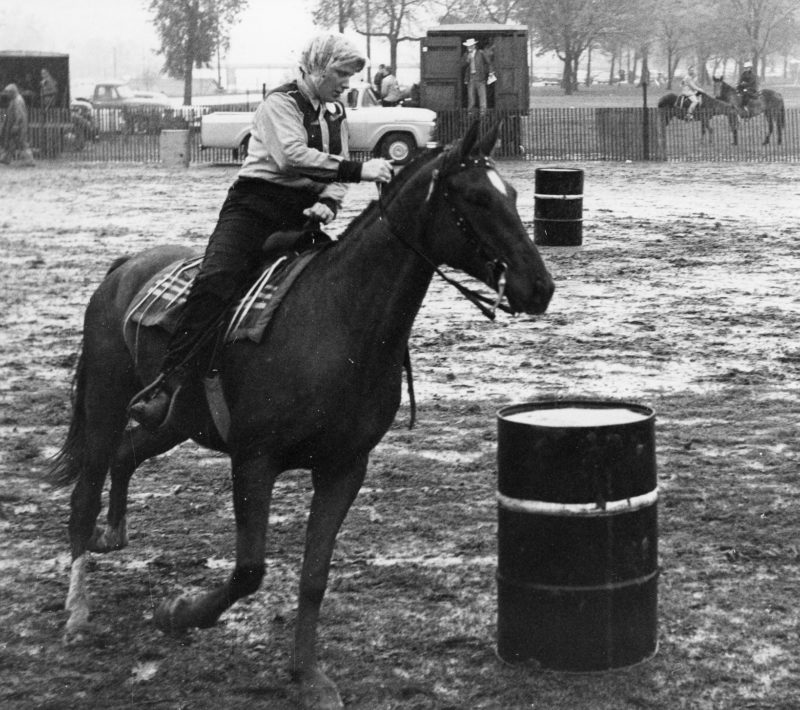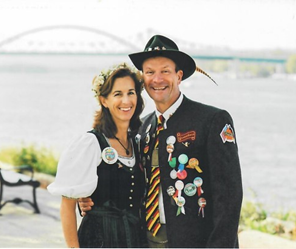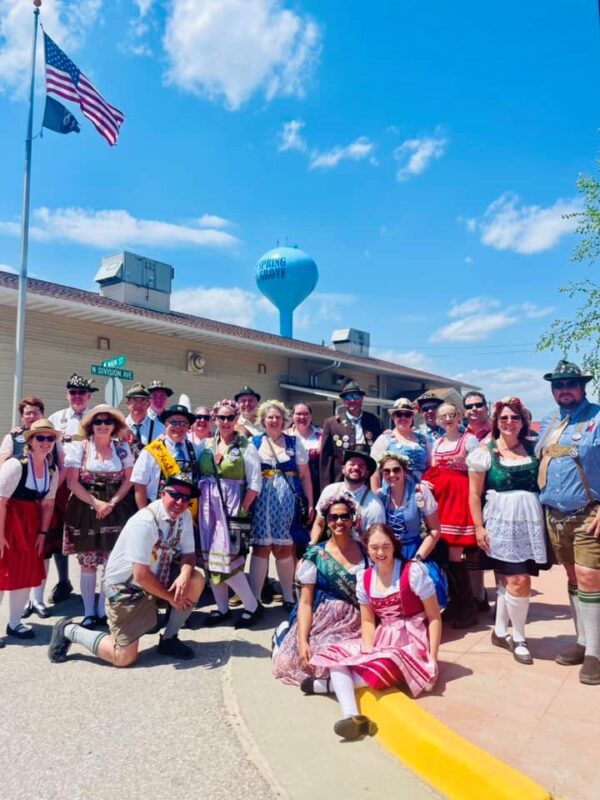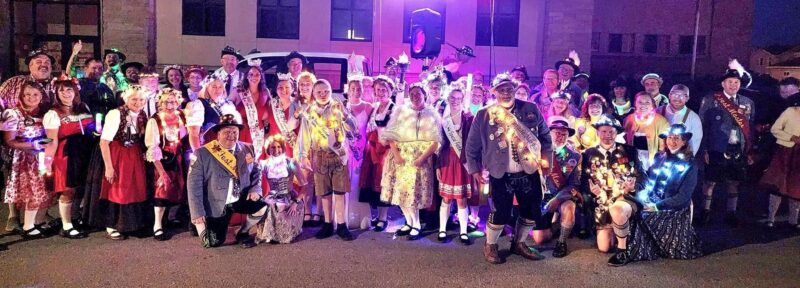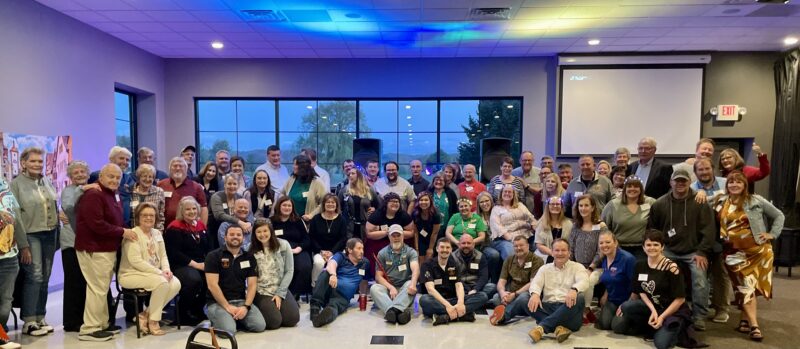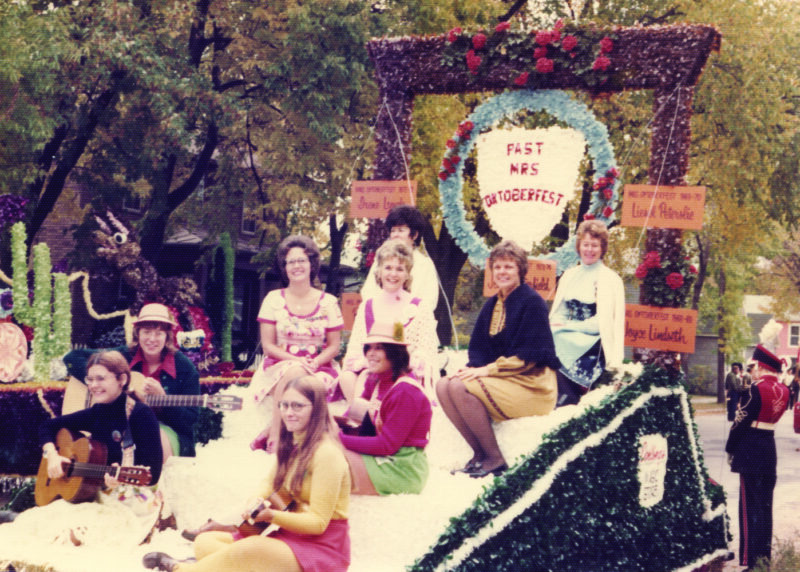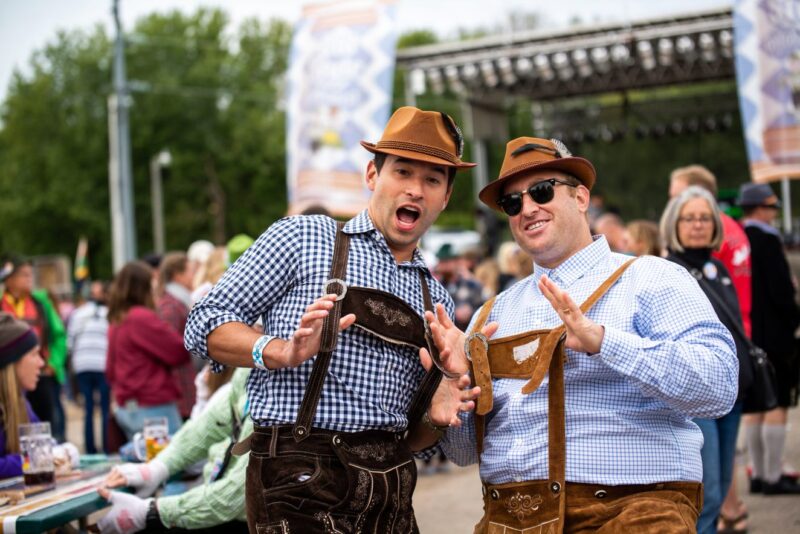The History & Role Of Our Oktoberfest Grenadiers
Our festive Grenadiers, also known officially as the Grenadier Corps are the most visible and spirited group of the Oktoberfest Royal Family. They consist of up to 25 married couples who escort the Royal Family to parades and events throughout the year. They are the bringers of fun, dancers to polka, clappers, and marchers of many parades. The Grenadier Corps was formed in 1971 with the primary purpose to enhance the pageantry and support the functions of Oktoberfest USA.
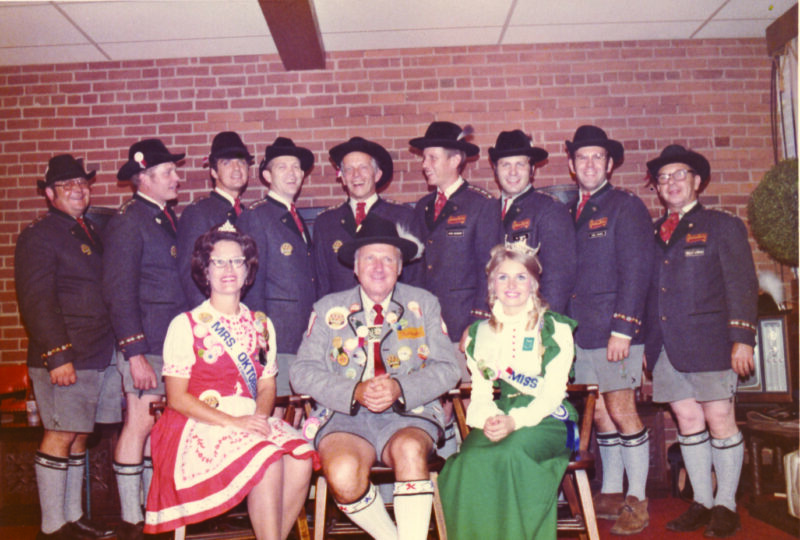
Pictured above are the Grenadier men with 1971 Mrs. Oktoberfest Betty Stoll, seated left, 1972 Festmaster Walt Hammond, and Miss La Crosse Oktoberfest Linda Deitte. Standing from left, back row: Burt Nelson, Mike Core (1972 General), Bob Burns, Clyde Benjamin, Jack Custer, Fritz Schubert, Al Poser, Karl Paasch, and Wally Lorenz.
The need for the Grenadier Corps was first discussed by Jerry Miller, Bob Mullally; then President of the Oktoberfest Board of Directors; and Jack Custer on a train trip to the St. Paul Winter Carnival. They indicated it took so much time and effort to organize people, appearances at events and prepare the float for the many area parades during the summer. On April 21, 1971 , the proposed duties, organization, uniform, etc. for the group to be known as the Fesmasters’ Grenadiers were proposed and approved by the board. The name Grenadier first originated with the French army in the 1700s and also among the British Grenadier Guards who help guard the Buckingham Palace in London.
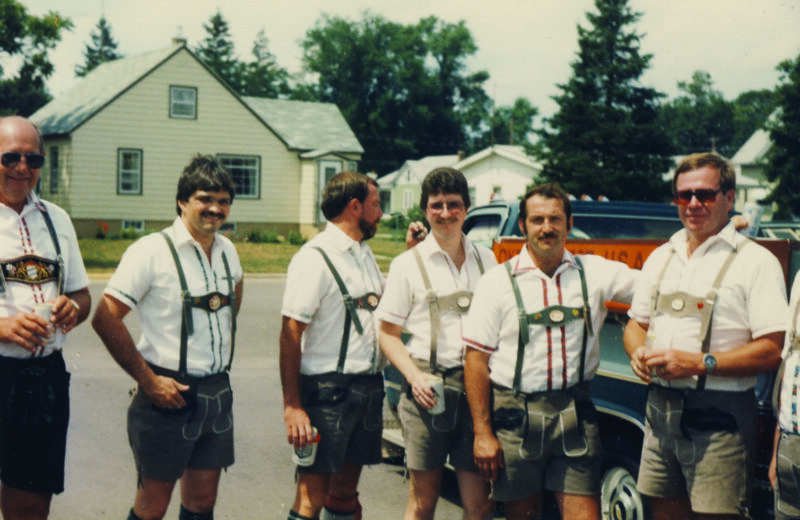
Pictured above from left: Festmaster Bernie Degen, Grenadiers Art Fahey, John McConaughey, Mark Kerrigan, Pete Stinson, and Al Poser
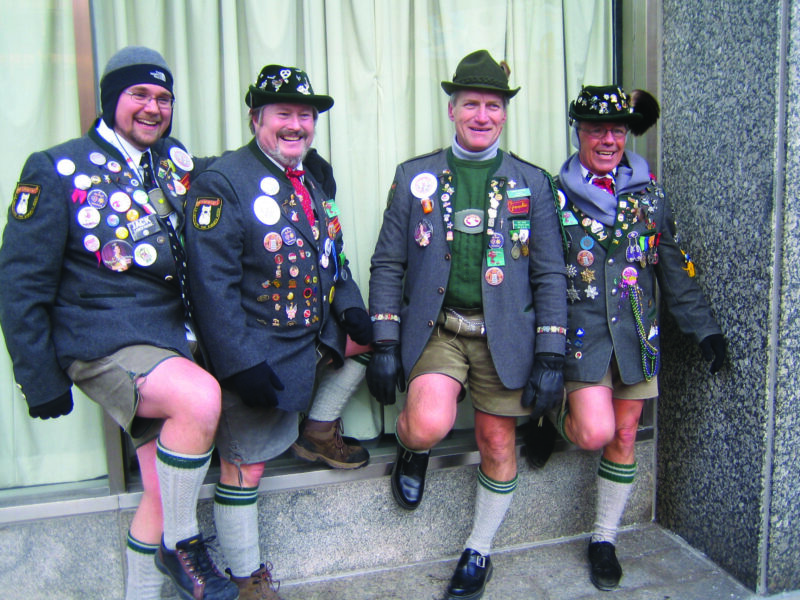
The cold weather at St. Paul Winter Carnival doesn’t stop the Grenadiers from wearing their shorts. From left: Keith Ryan, Dan Gundlach, Artie Schock, and Robert Richardson.
Each year, a Grenadier general is elected by members of the Grenadier Corps and can be identified by the gold chord on his uniform shoulder. Meet our current Grenadier Generals, Marty and Jane Frank pictured below.
The Oktoberfest Grenadier Corps is always interested in fabulous couples to fill their roster by submitting their interest here. Couples must be married and willing to commit to at least three years. Their election to the Corps is then voted upon by the current members and then presented to the Board of Trustees for final acceptance. Approved couples are required to attend at least nine parades from a total schedule of 16-25 parades annually. The Grenadiers are incredibly generous volunteers of their time, effort, and money. They are involved not only with Oktoberfest events but also numerous community charities and causes.
The Grenadiers thrive on fun, family, and friendships and are always there to extend a helping hand where and when needed. The Grenadiers have an unwritten vow: “Once a Grenadier, always a Grenadier.” Below is the current roster that makes up Oktoberfest USA Grenadier Corps:
Eric Bashaw & Debbie Neitzel
Bill & Dani Baxter
Lance & Karya Eitland
Marty & Jane Frank
Chris & Susan Hoghaug
Scott & Jenny Jackson
Zach & Margy Krogman
Matt & Kristina Meitner
Sam & Megan Pierce
Justin & Jessica Putnam
James Richgels & Katie Wilhelm
Sam Schmidt & Linh Nguyen
Adam & Stephanie Stevens
Chad & Angi Tamke
Mike & Lauren Tiggelaar
Cody & Marie Zimmermann
The History Of Oktoberfest’s Torchlight & Maple Leaf Parade Marshals
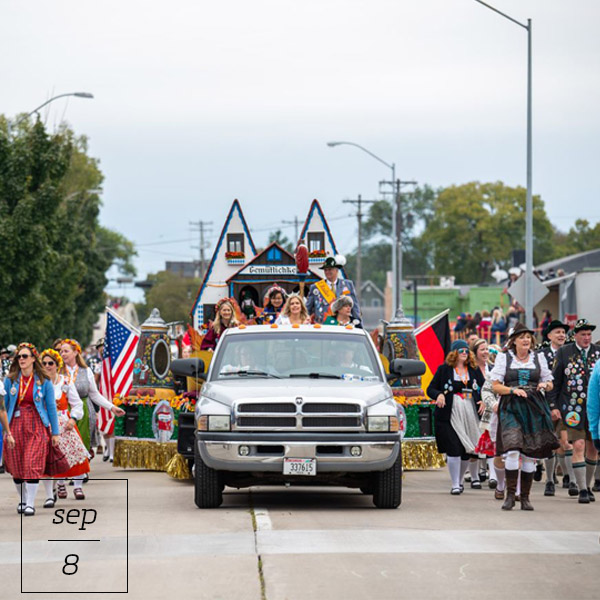
Our Royal Family Torchlight & Maple Leaf Parade Marshals embody the spirit of Oktoberfest and lead our parades that Fest-goers line the streets each year to anxiously see. The Maple Leaf Parade kicked off Oktoberfest’s first year in 1961, while the Torchlight Parade was first held in 1971.
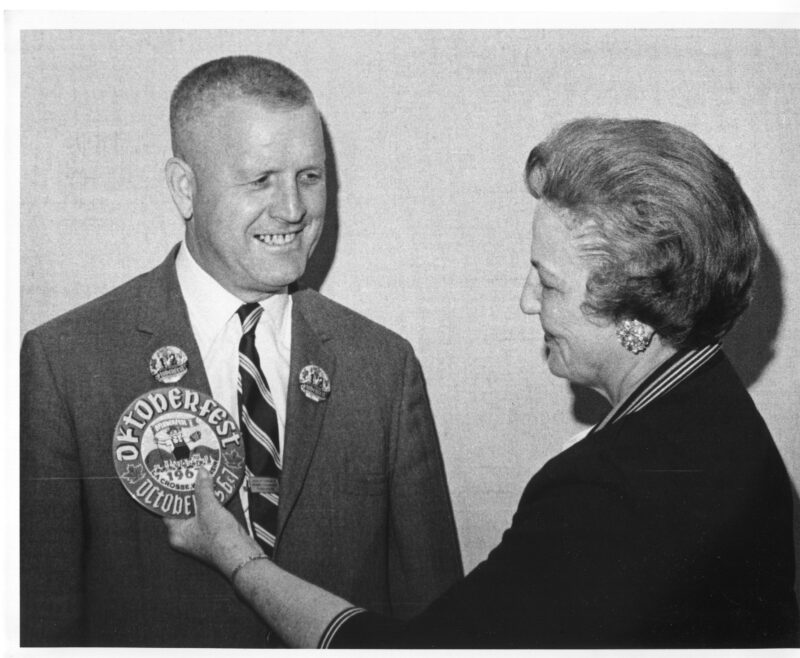
Pictured above is 1961 Parade Marshal Esther Domke awarding a special button to 1969 Maple Leaf Parade Marshal Kootch Carroll.
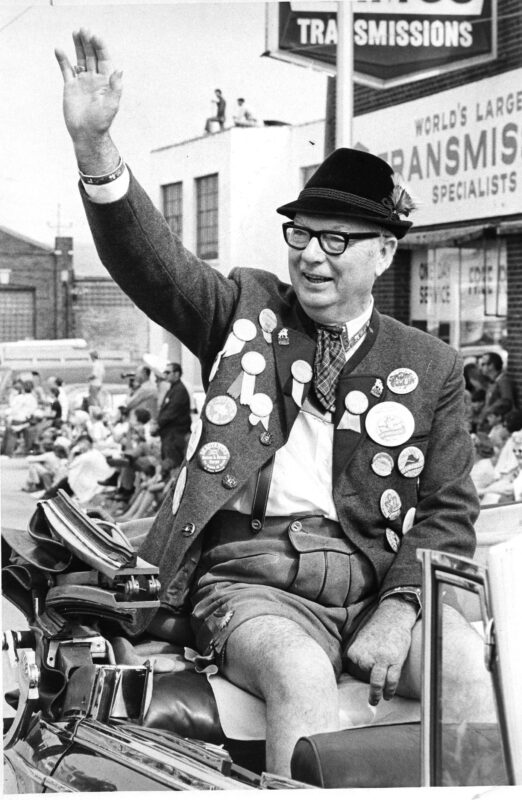
Pictured above is Marshal Ed Quillin in the 1971 Maple Leaf Parade
La Crosse Festivals Inc. (d/b/a Oktoberfest USA) accepts nominations for Parade Marshals through February for the current calendar year.
A nominee should be a person who:
• has contributed positively to the good of the community through leadership and outstanding accomplishments
• is someone of good character that is well-respected
• is a resident for at least 10 years within a 20-mile radius of La Crosse
• is actively involved and well-known in the La Crosse community
• is well-known, well-liked, friendly, and outgoing
• has the time to devote to Oktoberfest activities
All entries must be received no later than the third Monday of March, annually. to be considered for the current year. The new Parade Marshals are announced at the Kick-Off Party in September each year.
Eligible nominations shall remain active for three years from the date of the original nomination.
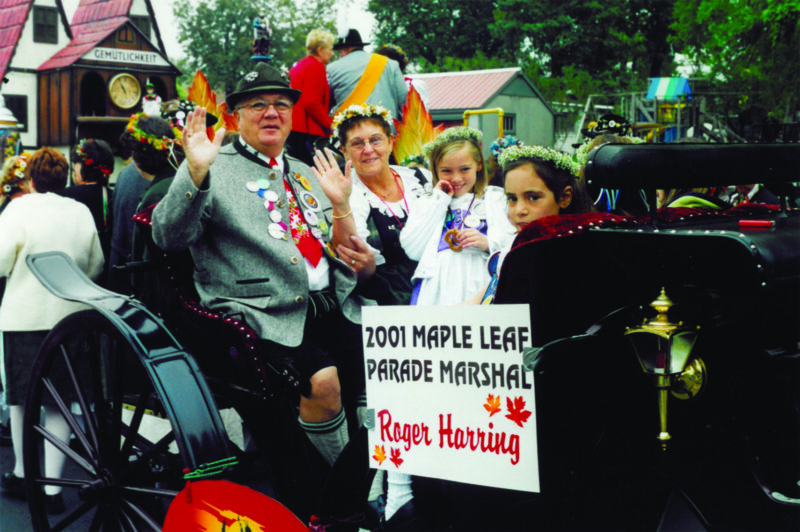
Pictured above is 2001 Maple Leaf Parade Marshal Roger Harring, his frau, Mary, and granddaughters, Allysa & Michaela.
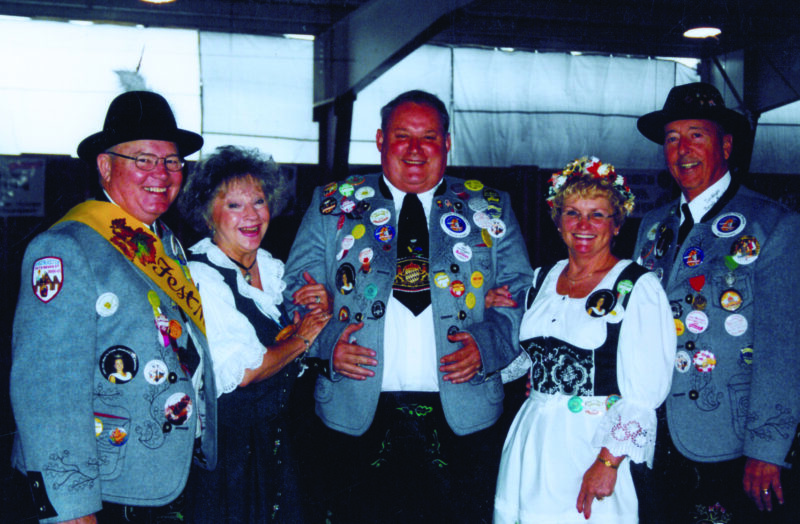
Pictured above are 2000 Torchlight Parade Marshals Dave Loomis, Sharon & Bud Loomis with Festmaster Lyle Quillin & frau, Sandy.
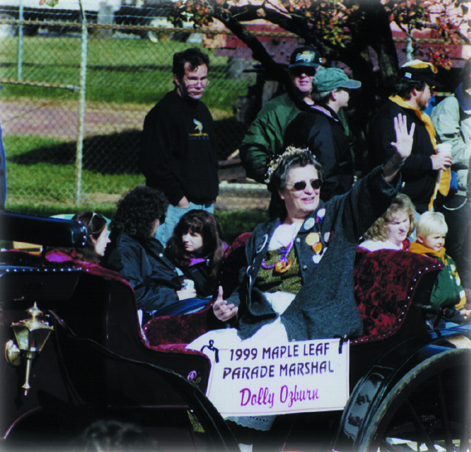
Pictured above is 1999 Maple Leaf Parade Marshal Dolly Ozburn.
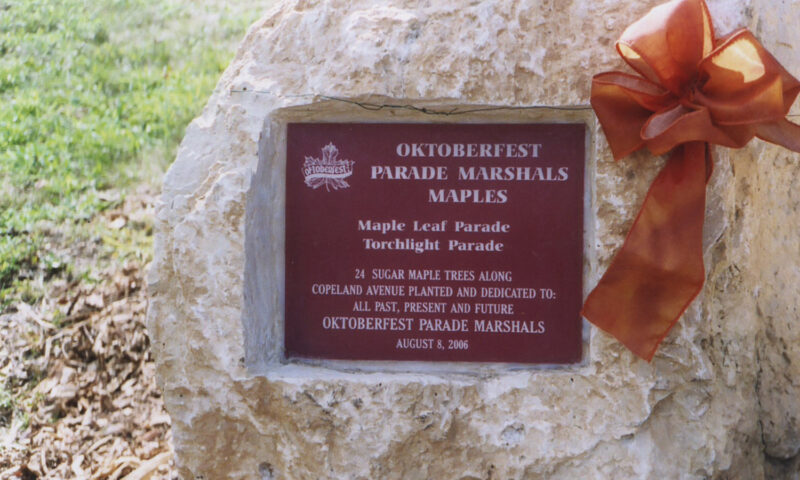
Parade Marshals give an “Ein Prosit” at the dedication of a marker in Copeland Park in 2006. They planted and dedicated 24 sugar maple trees along Copeland Avenue in honor of all past, present, and future Oktoberfest Parade Marshals.
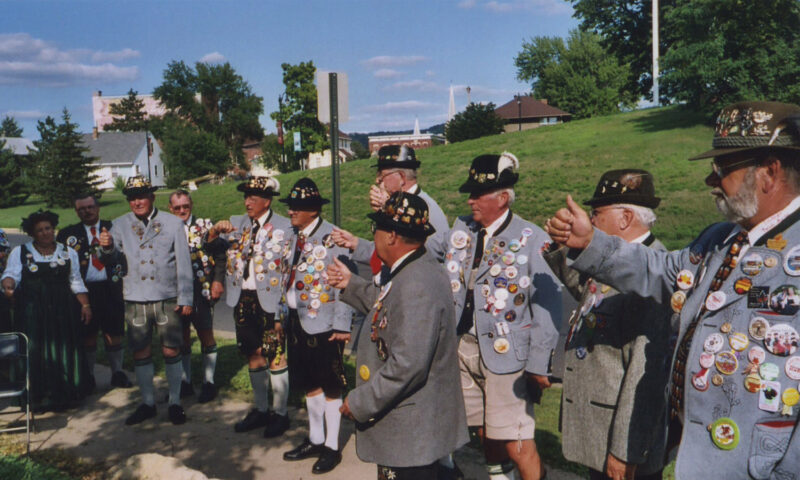
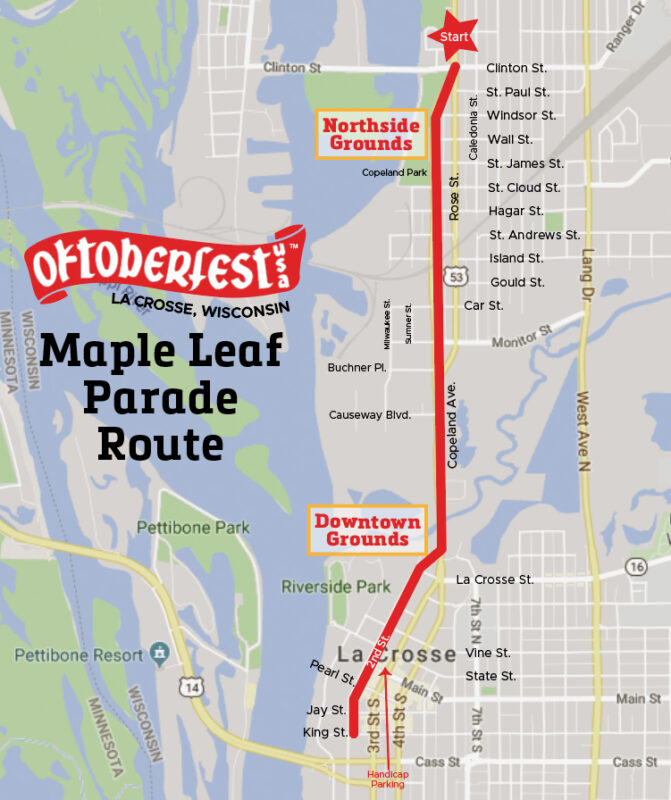
The Torchlight Parade kicks off Oktoberfest on Thursday evening at 7 pm with the route below.
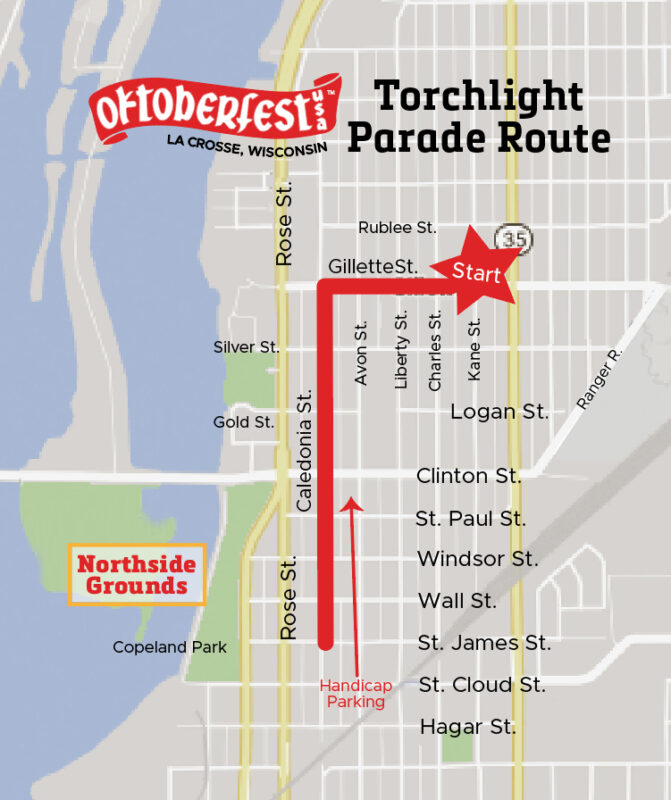
How Miss La Crosse Oktoberfest Became An Area Ambassador
The belle of the ball, Miss La Crosse Oktoberfest is a role model, an ambassador, and public representative for the La Crosse community and our Oktoberfest Royal Family in the Miss Wisconsin and Miss America organization. She is confident, poised, talented, intelligent, an activist on issues, an eloquent communicator and takes personal pride in physical fitness.
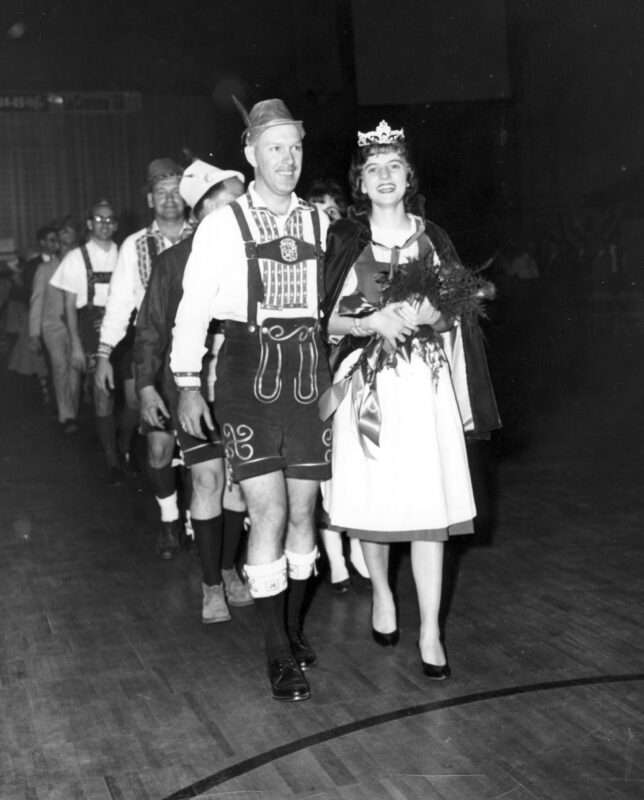
In 1961, Marlene Schultz (pictured above) was crowned the first Miss Oktoberfest, but halfway through the year, she got married and Diane Morgan stepped in and finished out the year as Miss Oktoberfest. In 1962, Bob Larson; the first pageant director; planned a Friday night program at the Mary E. Sawyer Auditorium that drew in a huge crowd. 29 women competed in the pageant and were judged based on these categories: informal dress, evening gown, Oktoberfest costume, and oral competition.
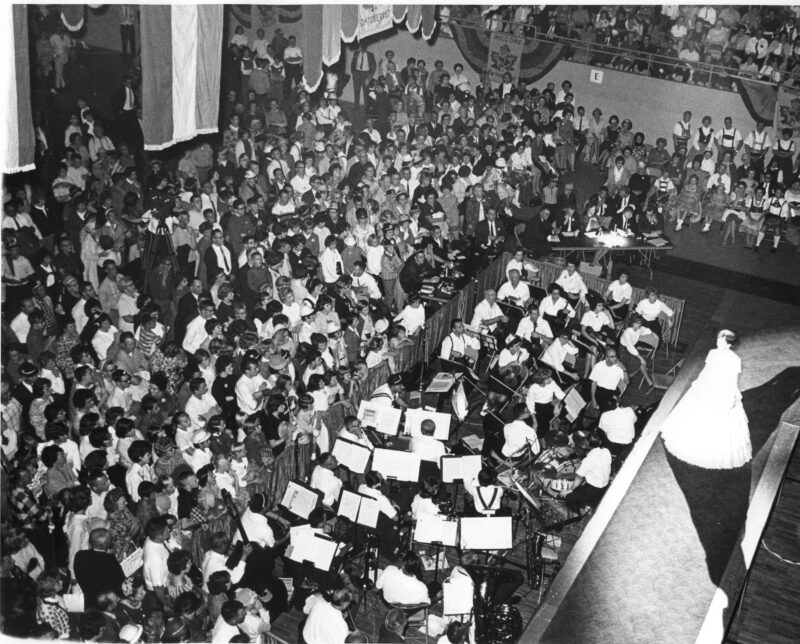
Pictured above is an overhead view from the Mary E. Sawyer Auditorium showing a candidate in front of the orchestra, judges, and audience.
Over the years, this pageant became known as the Miss La Crosse Oktoberfest Scholarship Program, an official preliminary to both the Miss Wisconsin and Miss America Organizations. Miss La Crosse Oktoberfest Scholarship Program awards thousands of dollars in cash and in-kind scholarships plus many gifts and benefits every year. Miss La Crosse Oktoberfest also travels to many festivals and appearances each year with the Oktoberfest Royal Family.
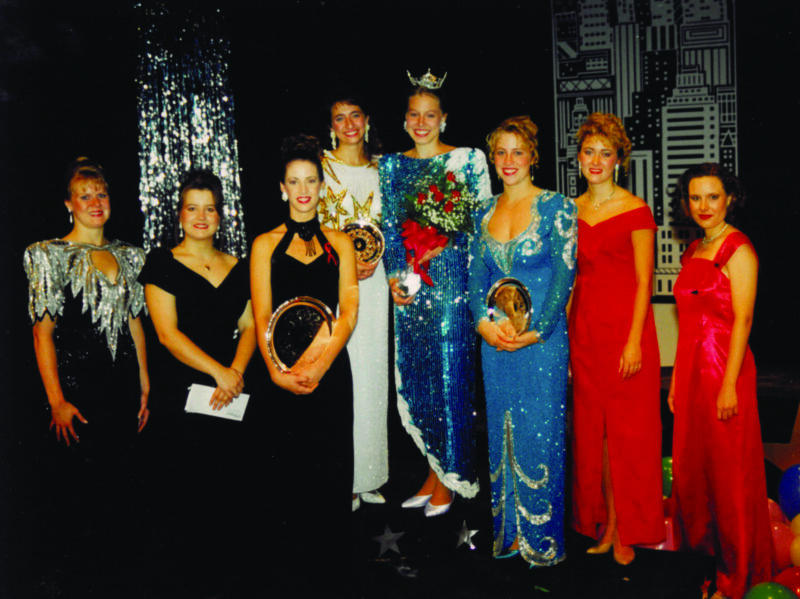
Pictured above in 1994 from left, Pam Hagen, Katherine Theisen, Abigail Meisch, Jeanie Hankey, Jaine Jessesski, Kristina Kruse, and Krista Clements.
Miss La Crosse Oktoberfest’s Marilyn Brahmsteadt (1967), Gail Soller (1981), Barabra Mullally (1983), Kristina Smaby (2006), and Kate Gorman (2011) have all become Miss Wisconsin during their reign. Kristina Smaby was also awarded over $30,000 in scholarships and headed West to compete at Miss America in 2010.
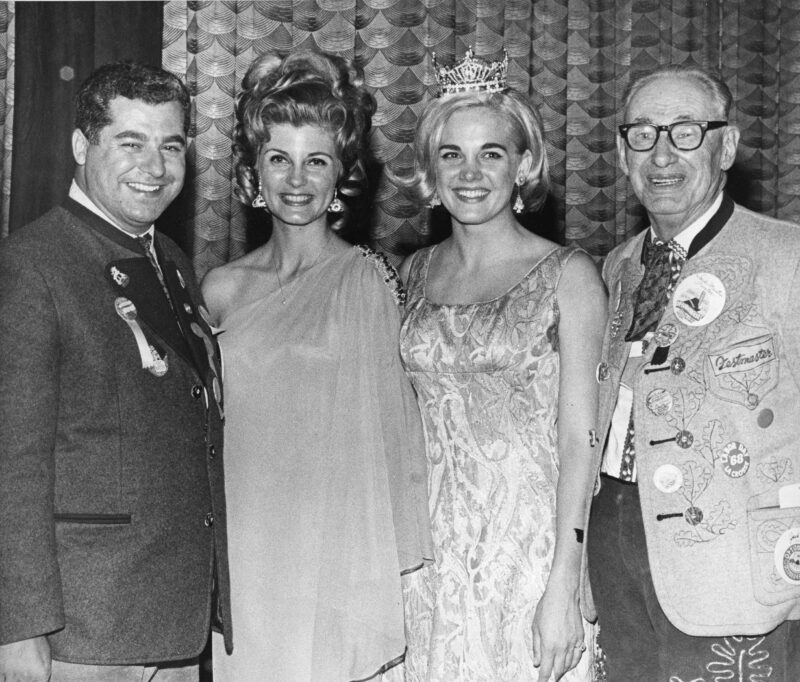
Pictured above from left, Jim Garvalia (1968 Fest president), Joan Mary Engh Gillete (1962 Miss La Crosse Oktoberfest and first runner-up in Miss Ameria pageant), Marilyn Brahmsteadt (1962 Miss La Crosse Oktoberfest and Miss Wisconsin), and Jack Martin (1967 Festmaster).
In order to be eligible to become Miss La Crosse Oktoberfest, you must:
- be a young woman between the ages of 17 – 25
- be 18 years of age by July 31st of Miss Wisconsin competition and no older than 25 by December 31st of Miss America competition
- be a high school graduate at the time of the Miss Wisconsin competition
- live, work, or go to school in La Crosse County
- never have been married or pregnant
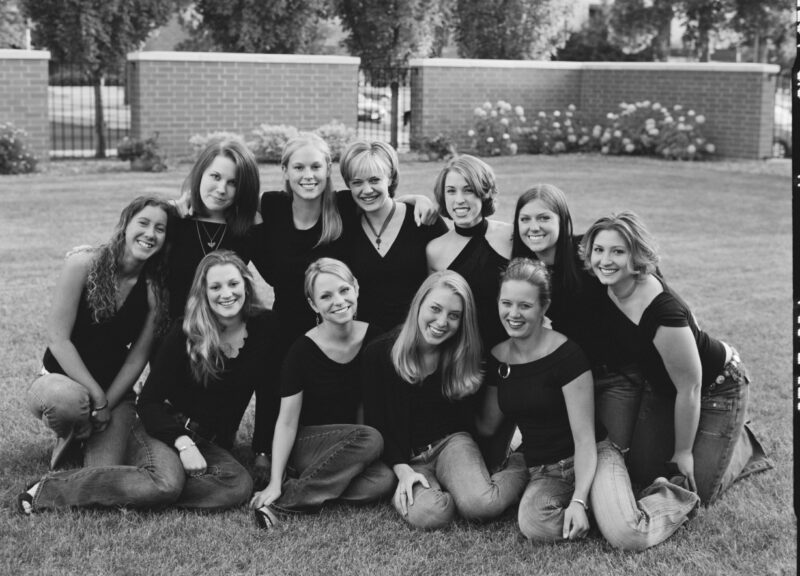
Pictured above are Miss La Crosse Oktoberfest contestants in 2004 from front row left, Amber Brand, Beth Bruzek, Kristina Gross, and Katie Rick. Back row from left, Erin Peterson, Lauren Buelow, Katie Ekern, Ashley Salzmann, Maggie Lee, Rachel Collins, and Trisha Zweig.
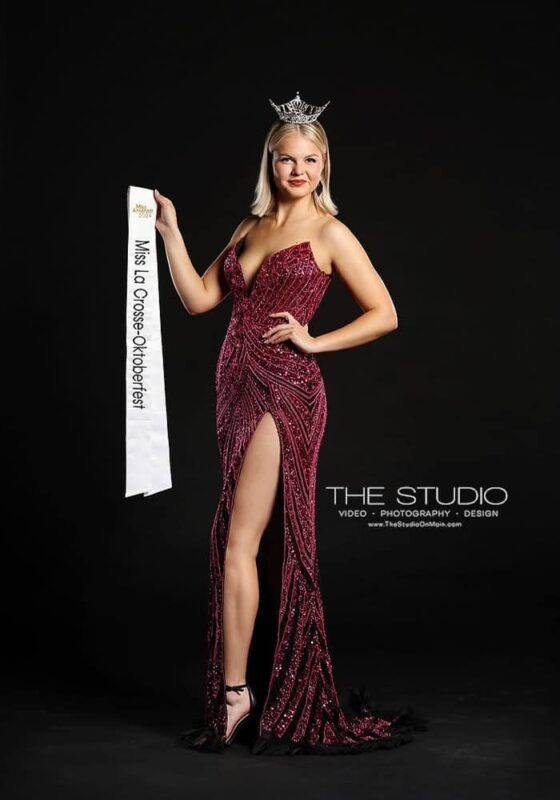
Meet our 2024 Miss La Crosse Oktoberfest here, Savannah Horstman (pictured above) and see the full list of former titleholders.
The Traditional Oktoberfest Song Playlist
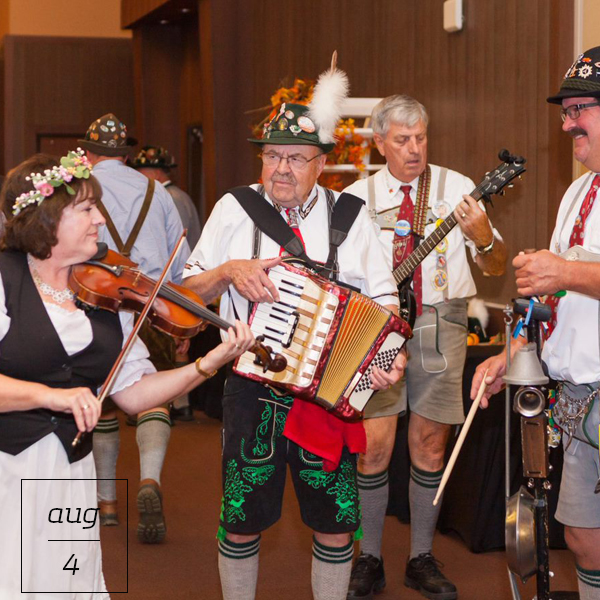
While the decades have changed since our beginning, the traditional Oktoberfest songs remain the same. From our favorite German drinking song to a diddy written JUST for our beautiful fest—with our handy song playlist below, you won’t miss an “Ein!” or a “Drei!”
EIN PROSIT!
Ein prosit
Ein prosit
Der Gemutlichkeit
Ein prosit, Ein prosit
Der Gemiitlichkeit
Ein! Zwei! Drei!
…Prost!
EDELWEISS
Edelweiss, Edelweiss, ev’ry morning
You greet me
Small and white, clean and bright
You look happy to meet me
Blossom of snow, may you bloom and grow
Blossom and grow forever
Edelweiss, Edelweiss
Bless my homeland forever
OKTOBERFEST IN LA CROSSE
Oktoberfest in La Crosse
What a wonderful time of the year
Oktoberfest in La Crosse, friendship, gemutlichkeit, and cheer
Oktoberfest in La Crosse
Ein Prosit, to everyone here
Oktoberfest in La Crosse
We do it with love each year
SUCH A HAPPY DAY
Been looking at the sky, for a little while watching the clouds roll by
And I start to smile and as a plane flies past, I give a friendly wave hello
And then I think about you
What a happy day
And I fly, fly, fly, like a pilot
I’m as strong, strong, strong as a lion
I’m as high, high, high as a mountain
In the sky -ay, ay, ay
And I jump, jump, jump like a kangaroo
I swim, swim, swim to be close to you
I shake, shake, shake you by the band
We’ll be friends till the end
This is such a happy day
Sha la la la la
This is such a happy day
Sha la la la la
Hey what a happy day
Sha la la la la
This is such a happy day
Sha la la la la
REPEATED 3 TIMES
This is such a happy day
Sha la la la la
This is such a happy day
Find our downloadable lyrics of Oktoberfest songs here.
The Role Of The Royal Family’s Mrs. Oktoberfest
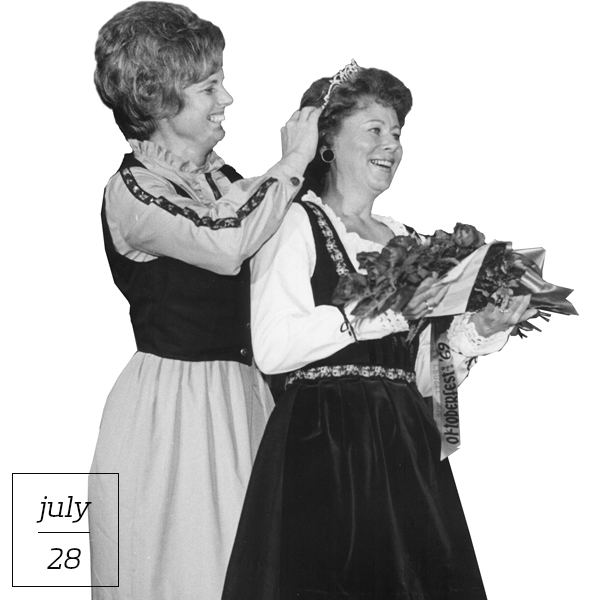
Mrs. Oktoberfest is the pillar of our community and to our hearts. The role of Mrs. Oktoberfest was first established in 1968 to complement Oktoberfest’s new “Family Fest” image. Jim Garvalia, President of the Board of Directors was asked by his wife Maxine, “How can you call it a “Family Fest” if there is no Mrs. Oktoberfest?” That question led to the addition of the new role to Oktoberfest’s Royal Family.
Pictured above is the very first Mrs. Oktoberfest, Joyce Lindseth passing off the jeweled Mrs. tiara to her successor, Leisel Peterslie in 1969.
Pictured above is a past Mrs. Oktoberfest float in the 1975 Maple Leaf Parade.
The requirements for a nominee should be a person who is:
- Actively involved in the La Crosse Community
- Married
- At least 50 years old
- Living within 20 miles of La Crosse
- Able to devote her time to numerous Oktoberfest activities throughout the upcoming year
- A La Crosse and Oktoberfest enthusiast
- Aware that you are nominating them to be Mrs. Oktoberfest
Prior to 1974, a tea was always set up to meet all the nominees and inform them of their duties and responsibilities of the role. Publicity photos were taken and interviews were conducted of all nominees by a panel of judges. Later, all would appear on stage at the Mary E. Sawyer Auditorium where a Mrs. Congenality, first runner-up, and the new Mrs. Oktoberfest were introduced.
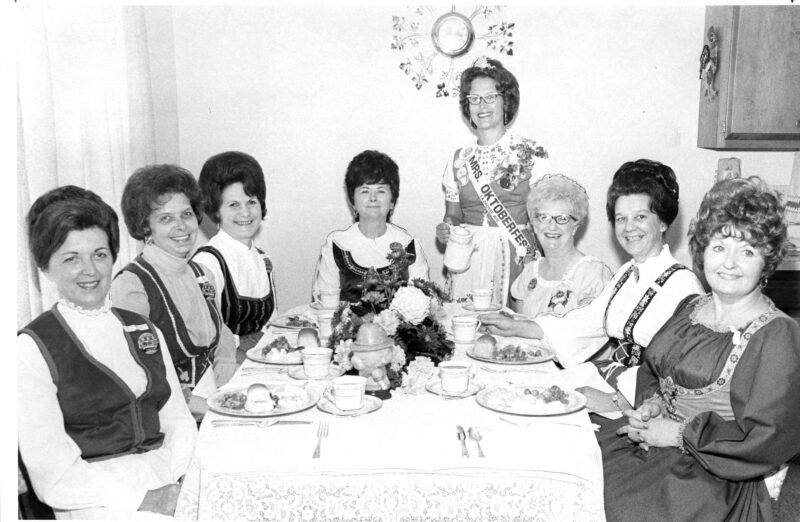
Pictured above attending the Mrs. Oktoberfest luncheon in 1972 from left, Ruth Ellen Bryham, Inez DePaolo, Anna Mae Kenyon, Irene Lynch, Mrs. Oktoberfest 1971 Betty Stoll, Bernice Delius, Alice Jean Herold, and Janet Jansky. The photo appeared in the La Crosse Tribune, October 3, 1972.
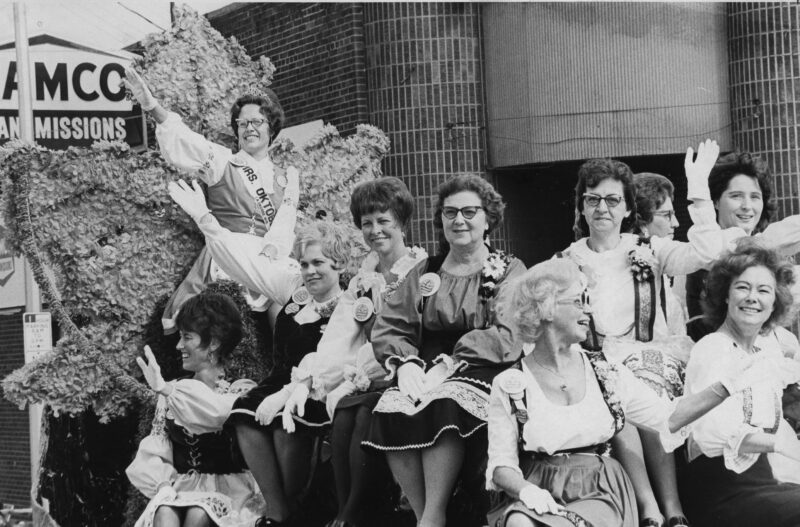
Pictured above is Mrs. Oktoberfest 1971 riding with other nominees of the competition.
The process for selecting the new Mrs. Oktoberfest has since changed to provide the community with a greater role in providing nominations. The nomination form can be found on our Oktoberfest website for Mrs. Oktoberfest and must be submitted by April 1st. Nominees are sent to all of Mrs. Oktoberfests and then narrowed down to a ballot of 5 nominees to be voted on again by all of the Mrs. Oktoberfests. The final votes are counted and the results will only be known by the two mentoring Mrs. Oktoberfests in a private meeting. The two mentors are:
- Chair: the person who served as the Mrs. Oktoberfest three years prior to the one to be selected;
- Second mentor: the person who served as the Mrs. Oktoberfest two years prior to the one selected
The mentors carry out the process of orientating the new Mrs. Oktoberfest and their husband about their roles as Fest royalty. The new Mrs. Oktoberfest is announced the week of Fest at the Mrs. Oktoberfest reception held at the UW-Lacrosse Student Union.
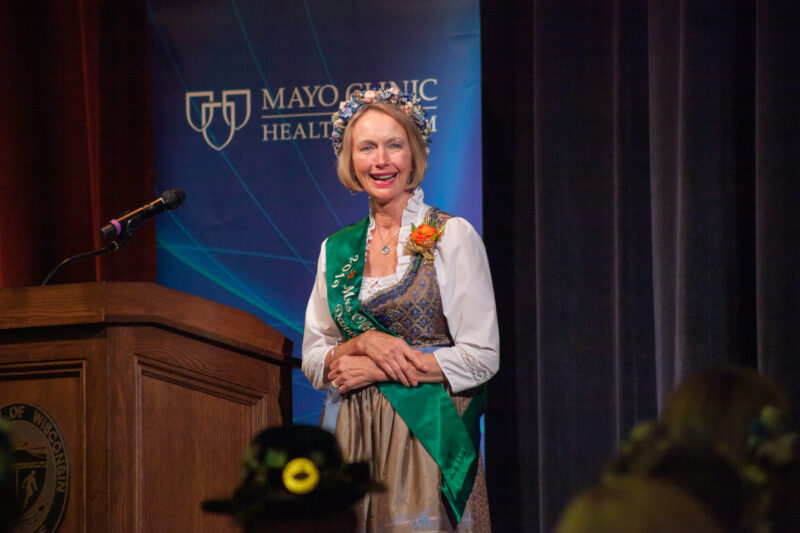
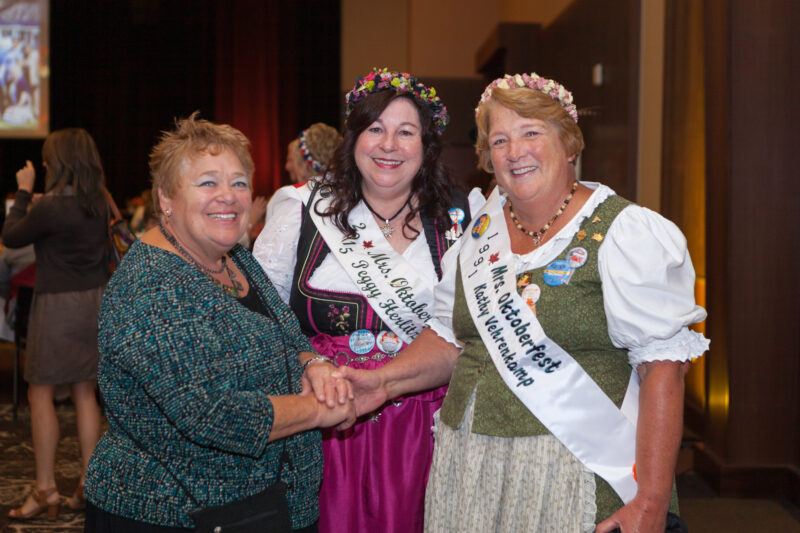
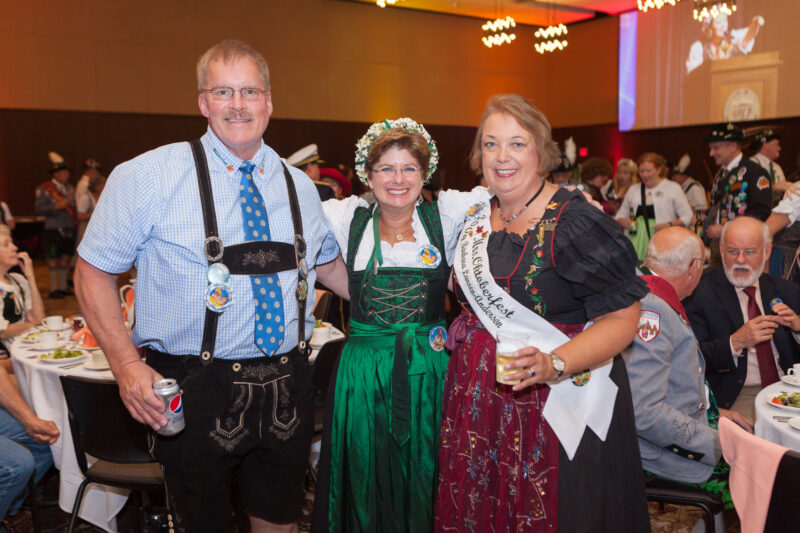
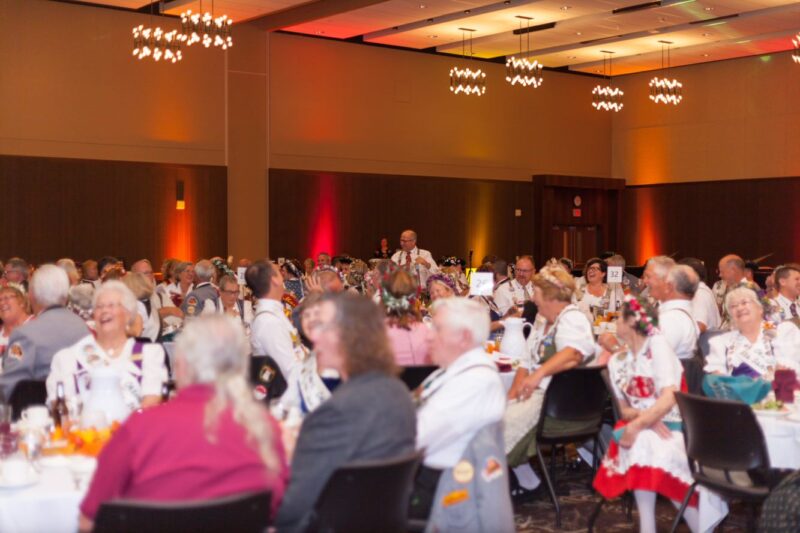
Photos above taken from 2019’s reception introducing the new Mrs. Oktoberfest, Darryle Clott (Husband aka Mr. O – Marv).
Since a Festmaster’s wife is called ” Frau,” it became apparent that Mrs. Oktoberfest’s husband should also have a title. He became known as “Mr. O.” Every woman cherishes being selected for this community honor and the close circle of friends made within the group.
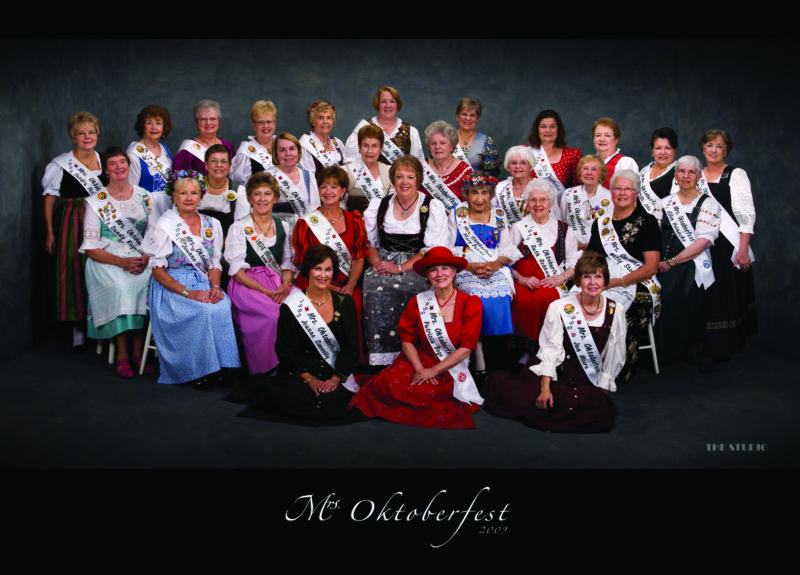
Photo above was taken prior to the Mrs. Oktoberfest reception Wednesday, September 28, 2009. See the full list of past Mrs. Oktoberfests here and to get to know our 2019 Mrs. Oktoberfest, Darryle Clott. (Pictured below with Mr. O, Marv Clott)
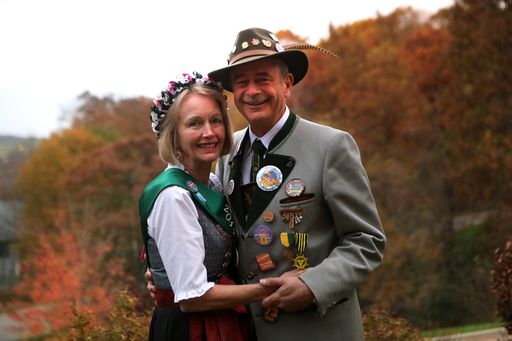
Which Side Do I Tie My Dirndl?
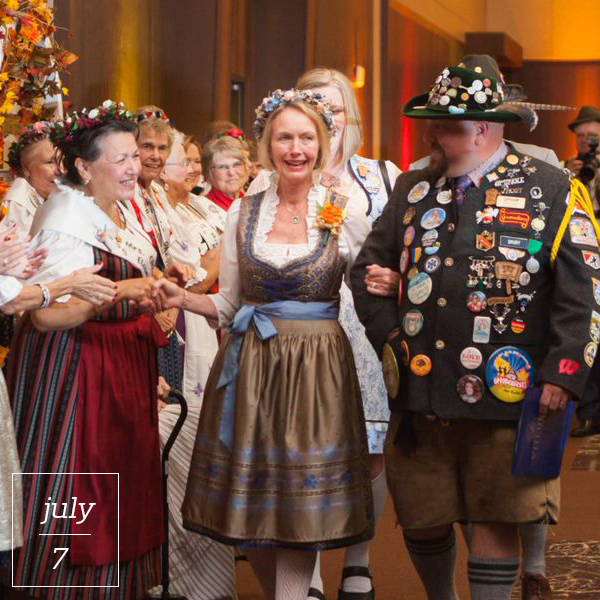
For ladies attending Oktoberfest in La Crosse, the dirndl costume is the traditional and trendy fashion of choice. It represents the appreciation and celebration of the Bavarian culture. But be careful which side you tie your dirndl on as this tells men about your relationship status! Part of the dirndl is the apron tied around a woman’s waist in a bow or knot. The placement of your dirndl’s apron waist bow or knot in particular has a significant meaning. It’s an easy way to know whether the woman is single and ready to mingle, in a relationship, married, or even widowed.
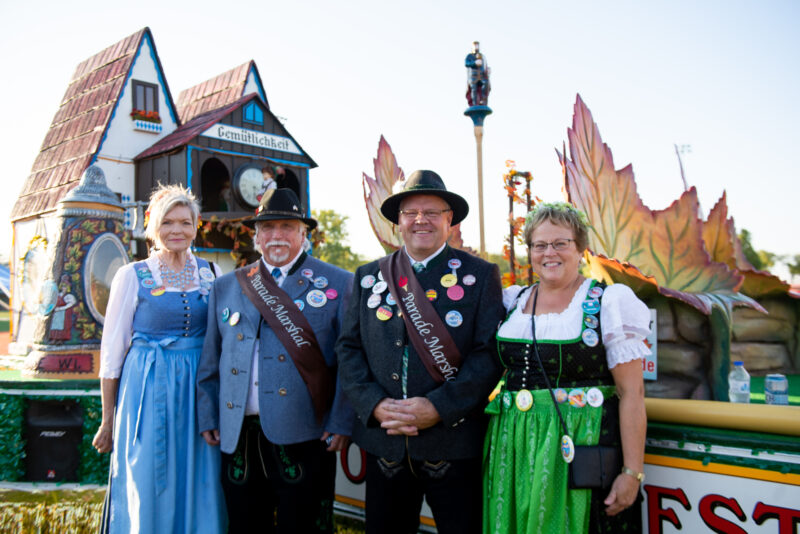
Tied on the Left
If the knot of the apron is tied in the front, towards the left side, it means that a woman is single.
Tied on the Right
However, if the knot of the apron is tied to the right side, it means that the woman is either married or in a relationship.
Tied in the Middle
Their relationship status is none of your business.
Tied on the Back in Center
The knot tied in the center on the back of the apron is for widows, waitresses, or children.
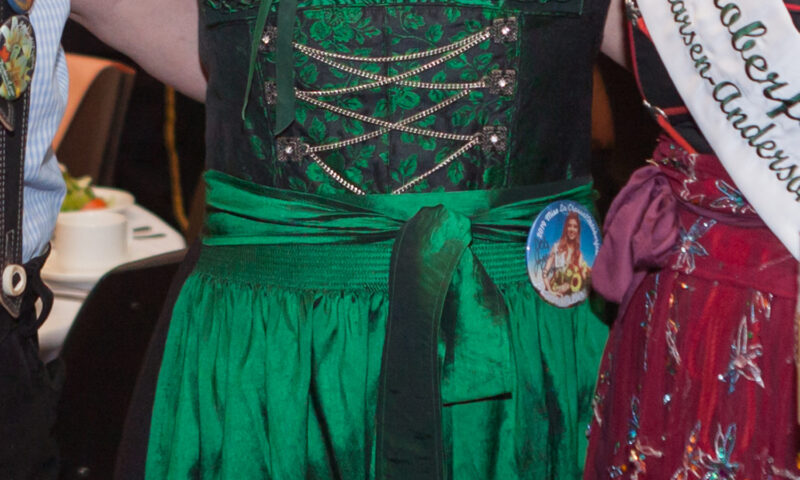
The Story Of Oktoberfest’s Traditional Lederhosen
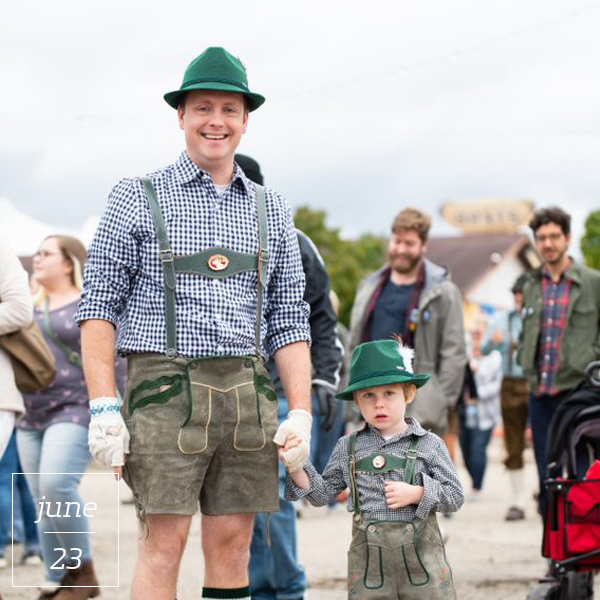
When you think Oktoberfest, you may envision beer and pretzels, but most of all, the traditional fashion of the men’s lederhosen. Lederhosen are short or knee-length breeches made of leather. Traditional lederhosen are hand made of tanned deer leather which makes the pants soft and light but very tearproof. All variations usually consist of two side pockets, one hip pocket, one knife pocket, and a codpiece (drop front). An Oktoberfest lederhosen costume consists of the following:
- Leather trousers in brown, dark green or black leather breeches, commonly short or knee-length but also as long ones called Bundhosen or Kniebundhosen, braided or embroidered
- Suspenders in “V” or “H” style
- White or light checkered shirt, usually in red, blue or green
- Socks, usually in cream, grey or hunter green in knee-length, ankle-length or Loferl-style
- Shoes “Haferlschuh” or “Haferl” in black or brown
Formerly, lederhosen were worn for pheasant work among men of the Alpine and surrounding regions, including Bavaria, Austria, the Allgäu, Switzerland, the autonomous Italian region of Trentino-Alto Adige/Südtirol (formerly part of Austria-Hungary) and Alpine area of today’s Slovenia.
La Couturière Parisienne, however, claims that lederhosen was originally not exclusively a Bavarian garment but was worn all over Europe, especially by riders, hunters, and other people involved in outdoor activities. The flap (drop front) may have been a unique Bavarian invention. The drop-front style became so popular in the 18th century that it was known in France as à la bavaroise, “in the Bavarian style.”
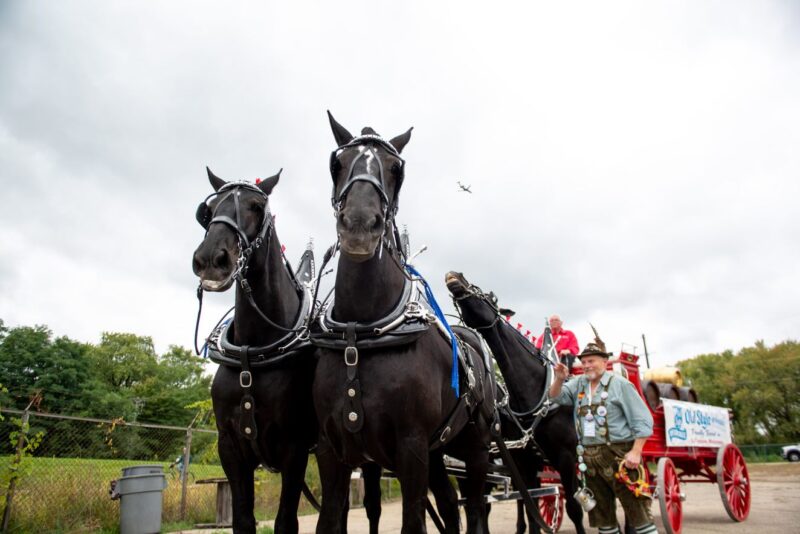
The popularity of lederhosen in Bavaria dropped sharply in the 19th century. They began to be considered as uncultured peasants’ clothing that was not fitting for modern city-dwellers. However, in the 1880s a resurgence set in, and several clubs were founded in Munich and other large cities devoted to preserving Bavarian culture with the lederhosen fashion. King Ludwig II was also a great fan of traditional costumes. His acceptance of lederhosen made it so popular that today Oktoberfest is not complete without it. Oktoberfest lederhosen represents the continued celebration, preservation, and pride of the Bavarian culture.
The History Of The Honorable Festmaster
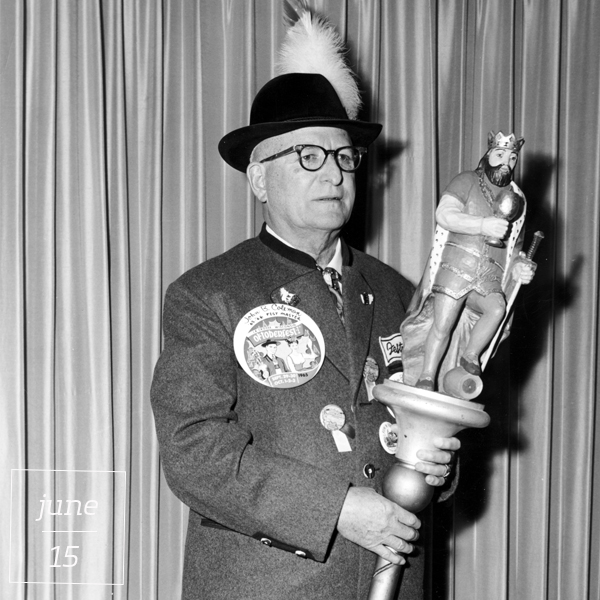
The selection and history of Oktoberfest’s Festmaster is one of the oldest and most cherished Fest traditions. The selection process and naming of the new Festmaster is very secret and the mystery only adds to the fun!
The Festmaster heads the Oktoberfest Royal Family and is chosen annually by the Board of Trustees. Once selected, the Board of Trustees Chairman, along with the past year’s Festmaster, mentors the new Festmaster, bringing him up to speed on his duties, expectations, and appearances. The new Festmaster & Frau are announced at the Festmaster’s Ball, held yearly in September.
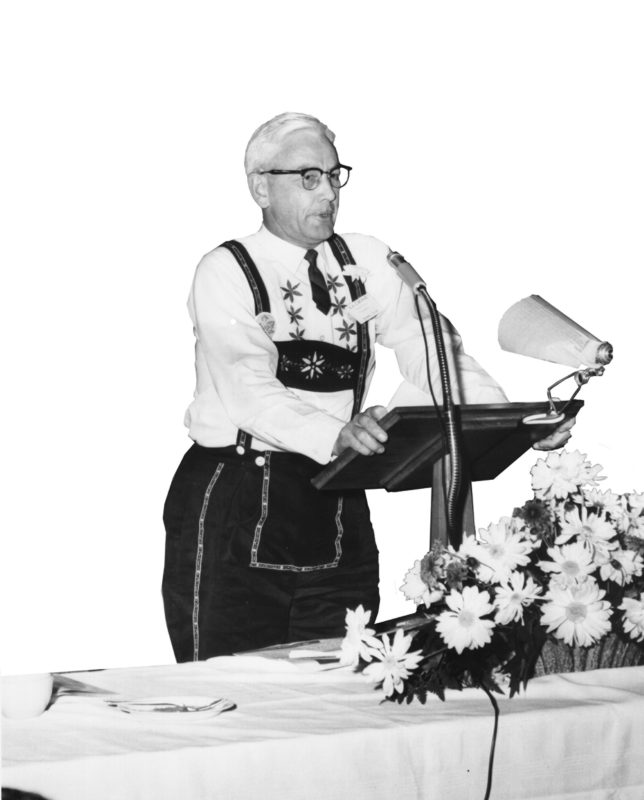
1962 Festmaster Don Rice pictured above
The first Festmaster was Don Rice in 1962 at the second Oktoberfest. The first four festmasters were chosen by Bob Abbott, president of the board of directors of Oktoberfest. Bob Abbott chose these members that were part of a golfing foursome; Don Rice, Ray Ping, Roy Kumm & John Coleman; who had first proposed the idea of a festival to lift the spirits of La Crosse residents during a time when so many had lost their manufacturing jobs.
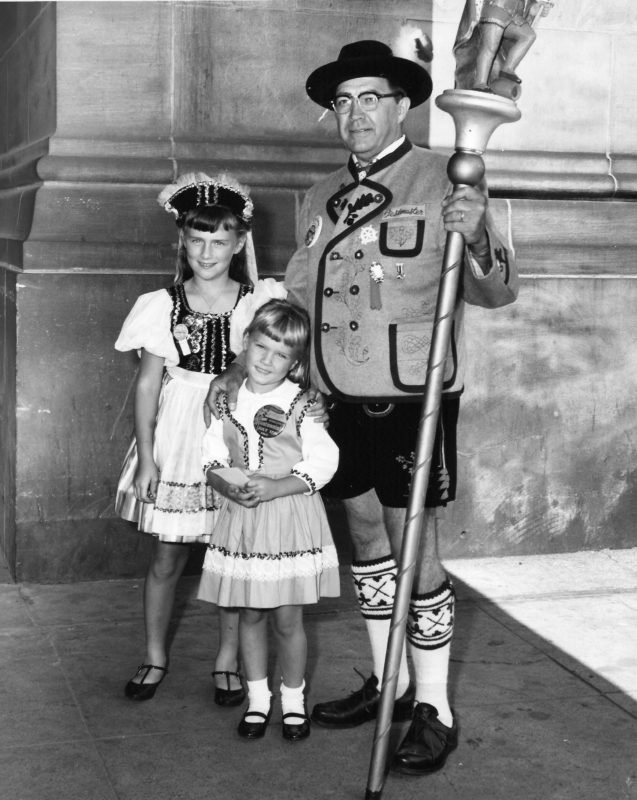
1964 Festmaster Roy Kumm with his granddaughters, Kristine, left, and Sandra, right, pictured above
In 1968 when Oktoberfest left the Chamber of Commerce and incorporated into its own La Crosse Festivals, the public was encouraged to submit nominations for Festmaster. Professional success, community volunteer involvement, personal ethics, family, age, and the availability to meet the year-long obligations of the honor were qualities needed. All entries are then reviewed and voted on by the Board of Trustees, who consist of all the former festmasters.
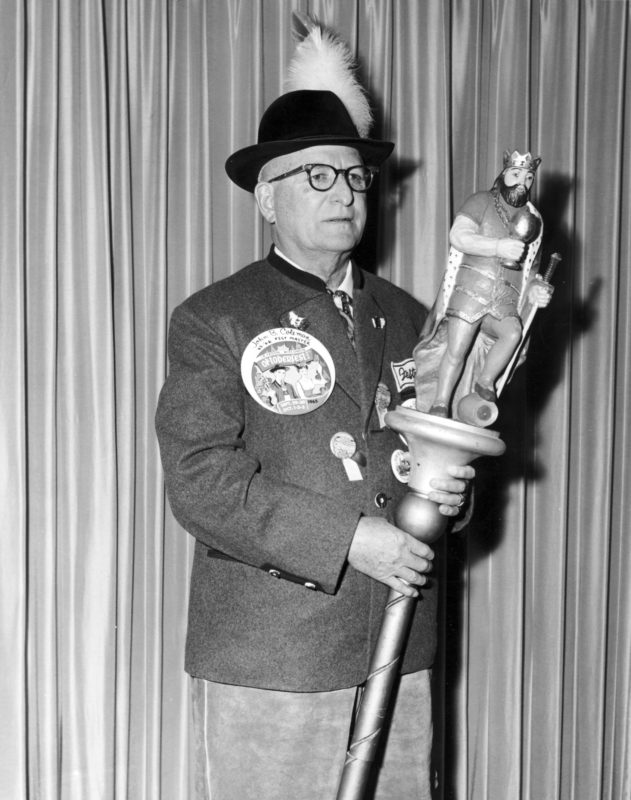
1965 Festmaster John Coleman pictured above
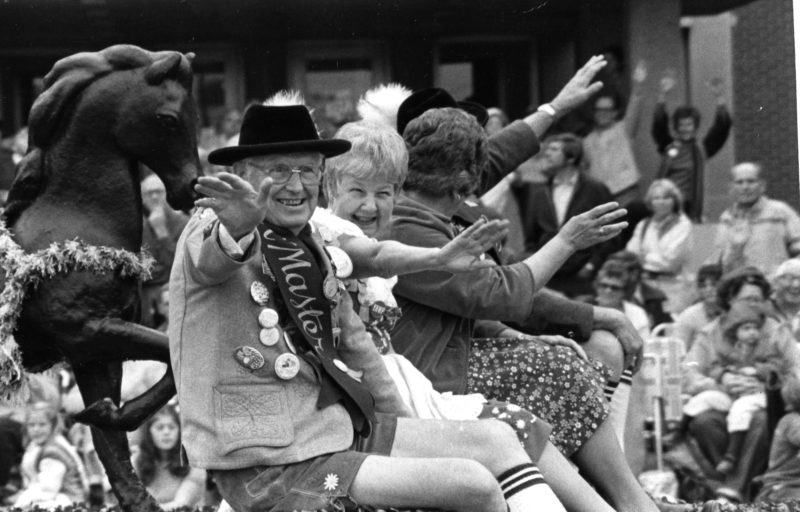
1970 Festmaster Cully Prinz and his wife Stubby in the Maple Leaf Parade
The search and nominations for the new Festmaster begin shortly after Oktoberfest is over. Entries must be submitted by January, at which point, a three-month selection process begins. The list is narrowed to 10 and then to 5. The final five are listed in order of preference by each trustee and ballots are sent to the current trustee president. He and the immediate past Festmaster open and count the votes. They are the only two who know the identity of the newly chosen man whose code name is “Herman.” Herman is contacted in late March to accept this honor.
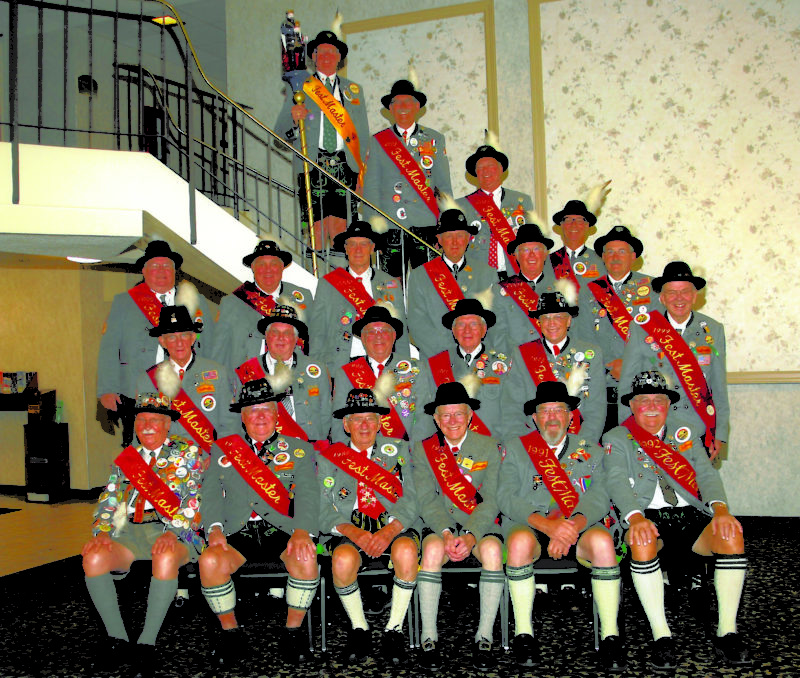
The Festmasters in 2009 pictured above
To be chosen as Festmaster is considered to be one of the highest honors for any man in the La Crosse area. The new Festmaster & his wife known as the Frau, are announced in September at the Festmaster’s Ball, the most regal and special evening in La Crosse with over 1,000 attendees who dress in their festive suits and gowns. This event is open to the public with advanced reservations. Meet Terry & Michelle Cowgill, (pictured below) our 2019 Oktoberfest Festmaster & Frau here.
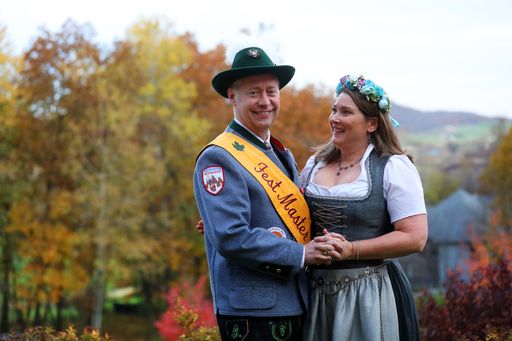
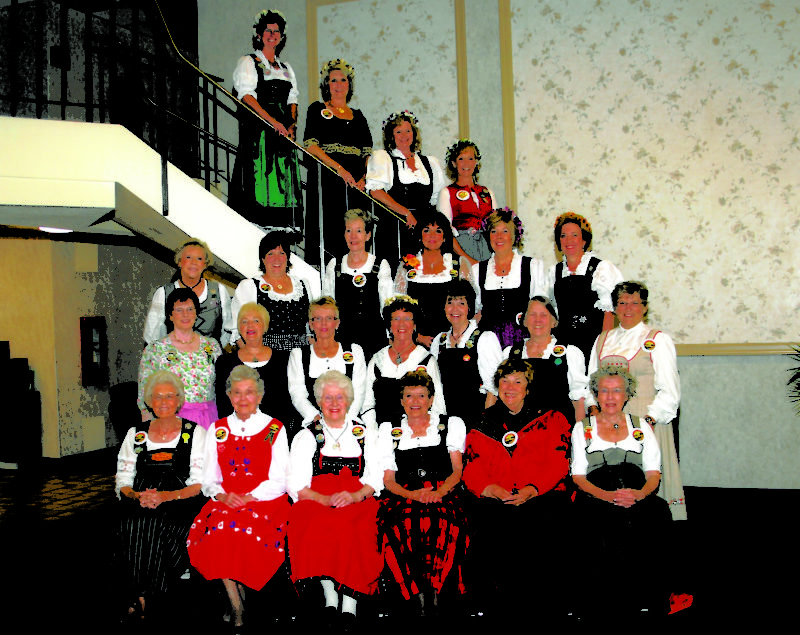
The Fraus in 2009 pictured above
Traditional Oktoberfest Fashions Of The Woman’s Dirndl
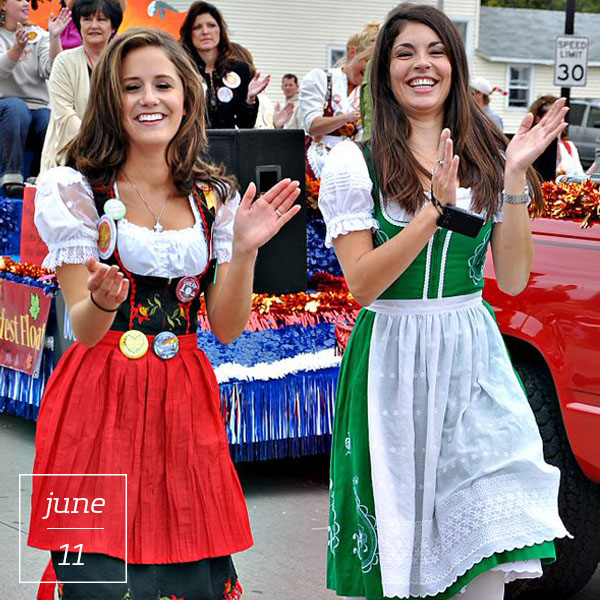
You may have seen or heard of a dirndl, but what is it exactly and how did it come to be the traditional Oktoberfest fashion worn by women? A dirndl is the name of a woman’s dress traditionally worn in southern Germany, Austria, Liechtenstein, Switzerland, and Alpine regions of Italy. The dirndl is a folk costume (in German – Tracht), and today is generally regarded as a traditional dress for women and girls in the Alps. It developed during the 19th century, originally worn by Alpine peasants as work clothes while they cleaned, worked on farms and in fields.
Today the term “dirndl” refers to a dress with a tight bodice, featuring an often deep rectangular or round neckline, a wide high-waisted skirt (whose length changes with prevailing fashions), and an apron. Styles and designs vary, from simple to high-end.
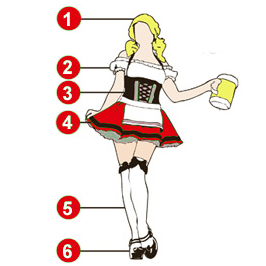
- Crown braids are the traditional hairstyle worn.
- The blouse accentuates the style of the dirndl; different styles include delicately hand-embroidered pieces, blouses with extravagant ruffles and lace, or simple ones with straight sleeves. It is short in length, reaching to just below the bust. Most blouses are white; typical materials are cambric, linen, or lace. Short puff sleeves are most popular, although narrow sleeves (short or long) are also common. The neckline may be high, V-shaped, balconette, or heart-shaped.
- The bodice (in German – Mieder or Leiberl) is sewn onto the skirt, although before the 1930s the two were separate. Both are made from colored or printed material, usually cotton, linen, velvet, or silk. The bodice is typically made in a single piece, with the join in the front center, secured by lacing, buttons, or a hook-and-eye closure or a zip.
- The dirndl skirt is wide and folds in to accentuate at the waist, making any woman look beautiful in a dirndl. It was originally ankle-length but in more modern designs, is mid-length accented with an apron.
- Stockings are worn and typically white in color and knee-length.
- Traditional German-style shoes and comfortable ones, we might suggest to wear during Fest if you plan to be on your feet all day!
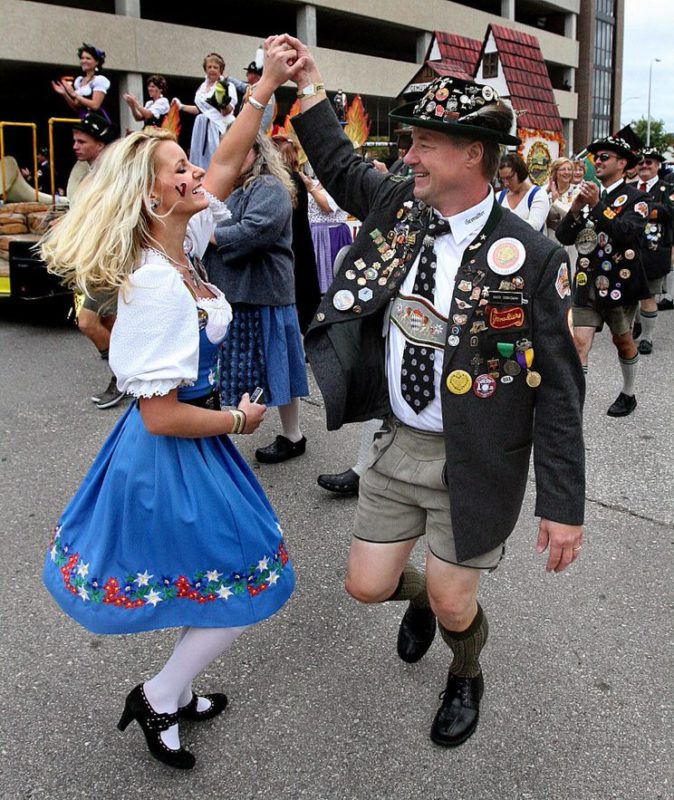
In the late 1800s, around 1870, the dirndl became widely popular among the upper echelons of society. Suddenly, the simple dresses made of practical fabrics were transformed into very stylish, colorful dresses often made of silk, satin, and other expensive fabrics.
Germans, Austrian, Swiss, and Scandinavian people migrated to North America in the 19th century. Across the US then and today, people celebrate their folklore heritage at community events and festivals wearing the dirndl as we do at Oktoberfest in La Crosse. See more traditional Oktoberfest fashions here.
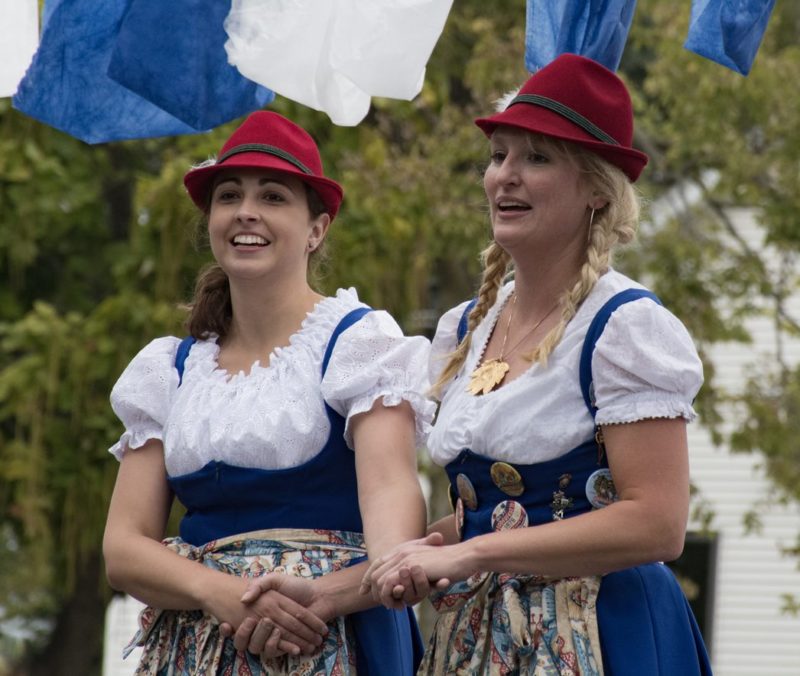
The History Of Oktoberfest In La Crosse
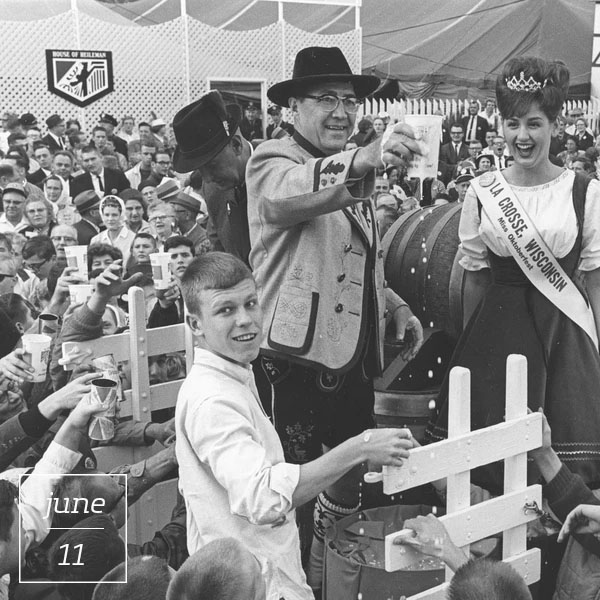
The first Oktoberfest, USA, was held on October 13, 14, and 15, 1961…but the planning began many months before. In early 1960, civic leaders had agreed that La Crosse needed a community-wide activity of some sort. The city had been without such an event since 1921. Because that earlier celebration had been a winter carnival, many of the leaders were in favor of renewing this idea as a La Crosse tradition.
However, there were problems involved with holding a winter event on the same dates each year. First, as we all know, it is virtually impossible to predict the winter weather in Wisconsin from day to day, much less a year in advance. Second, assuming the worst, the costs of providing artificial ice and snow were prohibitive. Finally, there were several winter carnivals in the area, including the internationally known St. Paul Carnival. The proximity of Minneapolis and its highly successful summer festival, Aquatennial, tended to rule out a similar event. Although neither festival was completely dismissed, it was agreed upon that a fall celebration was the best answer.
During the fall of 1960, several officials of the La Crosse based G. Heileman Brewing Company, Roy Kumm, Don Rice, John Coleman, and Ray Ping were also discussing an annual promotion. News of these discussions spread through the firm, eventually reaching the malt house, where two of the employees suggested having an Oktoberfest. One was John Dickow, who while in the army was stationed in Germany and attended Munich’s fall festival. The idea was quickly accepted, for two primary reasons:
- October is the time of color, as the leaves change from summer green to the brilliant fall colors.
- Early October usually marks the end of the harvest and the preparation for winter. It was believed that a festival at this time would provide an ideal “relief valve” and a way to give thanks for a bountiful harvest.
As the idea for an Oktoberfest grew, it quickly became apparent that there would be much more to do than could be handled by a single firm. It was agreed that the Oktoberfest should be a completely civic enterprise. Early in 1961, brewery officials contacted the La Crosse Chamber of Commerce and proposed the idea to chamber members. Oktoberfest in La Crosse was accepted, and both agreed that the chamber would act as the sponsoring organization.
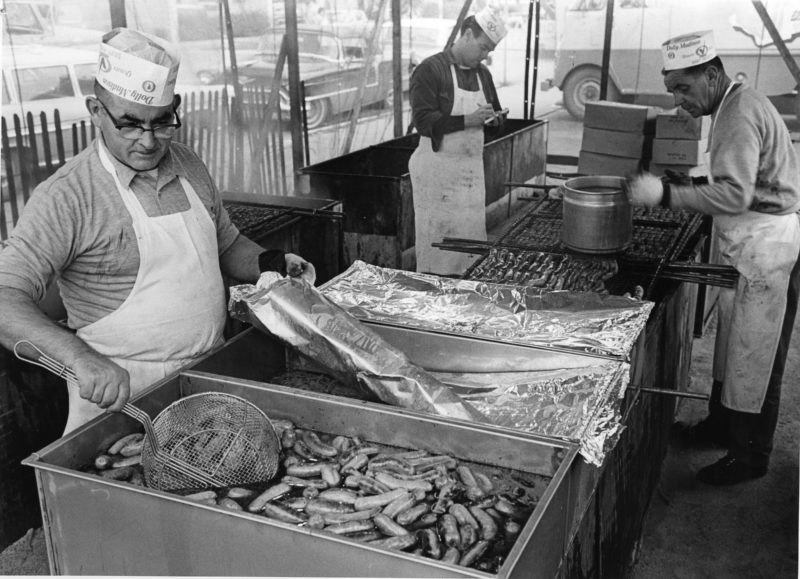
An Oktoberfest Committee was established to oversee the proposed annual celebration. This committee set forth five primary objectives for the fall festival:
- to promote local pride in La Crosse
- to obtain national publicity for La Crosse
- to promote “tourism” to La Crosse and the Coulee Region
- to involve a large number of people
- to break even financially, while remaining a non-profit organization
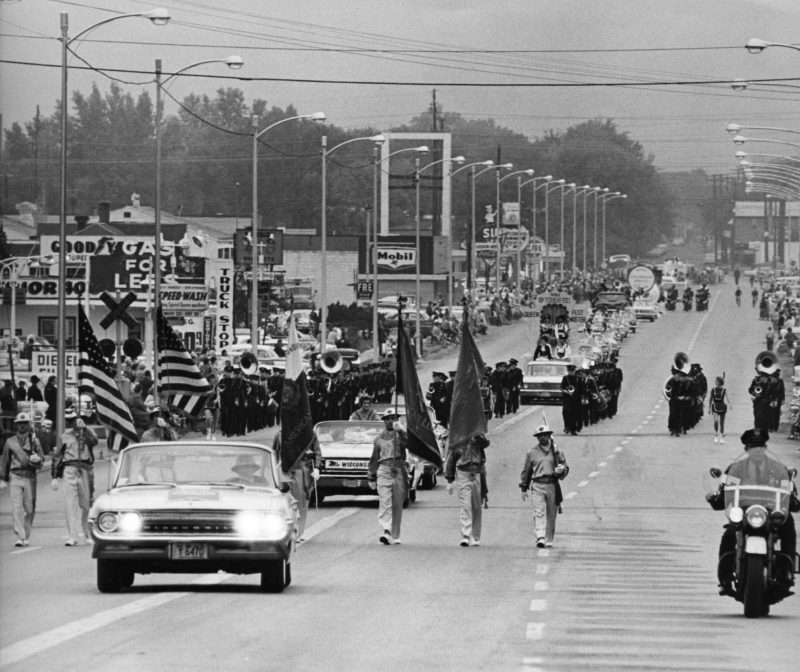
The almost unbelievable growth of Oktoberfest, USA, since that first year has made reality of all the objectives. It was conceived as a holiday for the community and accepted by the community on those terms. In 1962, the name “Oktoberfest” was registered with the State of Wisconsin. In 1963, “Oktoberfest, USA” was registered and listed as a trademark with the federal government. In 1965, the newly-formed La Crosse Festivals, Inc., purchased the assets of Oktoberfest from the Chamber of Commerce and became the sponsoring organization.
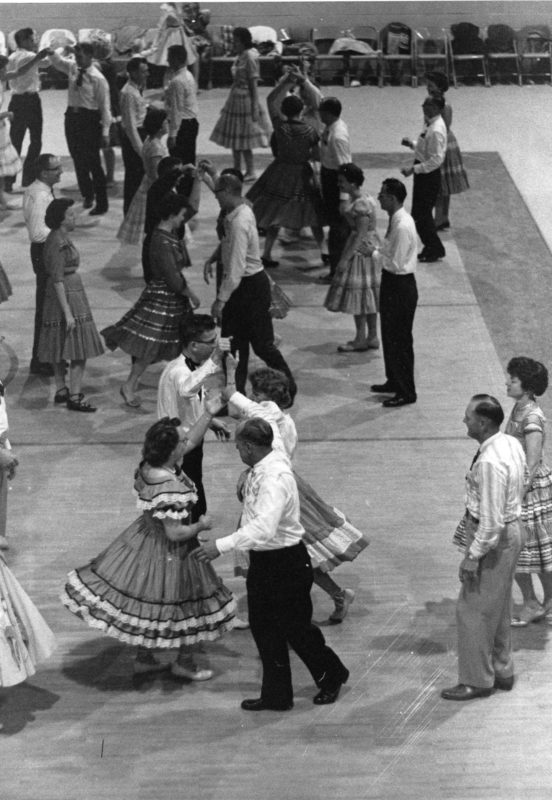
Fun Facts: The first Oktoberfest in La Crosse was called a “farm show” by many people. A cow chip throwing contest and catching a greased pig were attractions. Old-fashioned steam engines also participated in a demo of early log cutting during the lumber era of La Crosse. Art exhibits, train rides, and a rodeo were also favorite early events in 1962 that took place.
